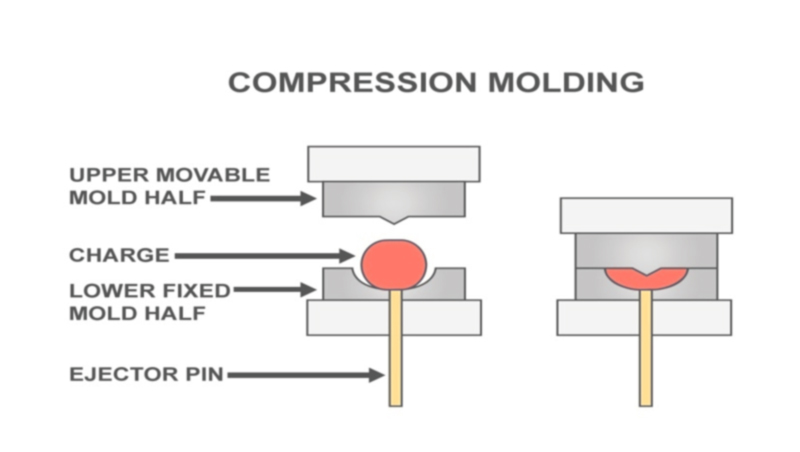Introduction to Continuous Compression Molding
Continuous compression molding (CCM) is a state-of-the-art technique used to produce high-strength composite components at scale. Unlike traditional batch compression molding, CCM provides a continuous, efficient, and consistent way to form materials into finished parts, especially suitable for long-length components made from thermoplastics and thermosets.
How Continuous Compression Molding Works
CCM involves continuously feeding a composite sheet—typically reinforced with glass or carbon fibers—into heated compression zones. These areas press the material into a specific shape using consistent heat and pressure. Once molded, the material passes through a cooling section and is cut to the desired length. The result: strong, uniform, and lightweight molded profiles ready for automotive, construction, or industrial use.

Advantages of Continuous Compression Molding
- High production efficiency for long composite profiles
- Minimal material waste due to net-shape forming
- Improved mechanical properties due to fiber alignment
- Uniform thickness and consistent quality
- Low labor and operating costs
Materials Used in CCM
Both thermoset and thermoplastic composites are used, including:
- SMC (Sheet Molding Compound)
- BMC (Bulk Molding Compound)
- Glass Fiber Reinforced Thermoplastics (GFRT)
- Carbon Fiber Reinforced Plastics (CFRP)
- Long Fiber Thermoplastics (LFT)
Applications of Continuous Compression Molding
This process is widely applied in industries requiring high-strength, lightweight parts:
Automotive Components
- Underbody shields
- Structural reinforcements
- Interior trims (LWRT)
- Battery enclosures
- Load floors
Construction and Building Materials
- Wall cladding
- Ceiling panels
- Roofing profiles
Electrical & Industrial
- Electrical boxes and panels
- Utility trays
Comparison: Thermoset vs Thermoplastic in CCM
| Property | Thermoplastic | Thermoset |
|---|---|---|
| Recyclability | High | Low |
| Processing Speed | Faster cooling | Slower curing |
| Temperature Resistance | Higher | Moderate |
Why Choose Continuous Compression Molding?
If you are seeking a solution for high-volume composite part production with enhanced performance and reduced costs, CCM is an ideal choice. With its adaptability to various composite materials and automation compatibility, this technique meets modern industrial needs for lightweight, durable, and efficient manufacturing.
For more on composite molding technologies including compression molding, carbon fiber molding, SMC tooling, and lightweight automotive solutions, follow our blog or contact us today.